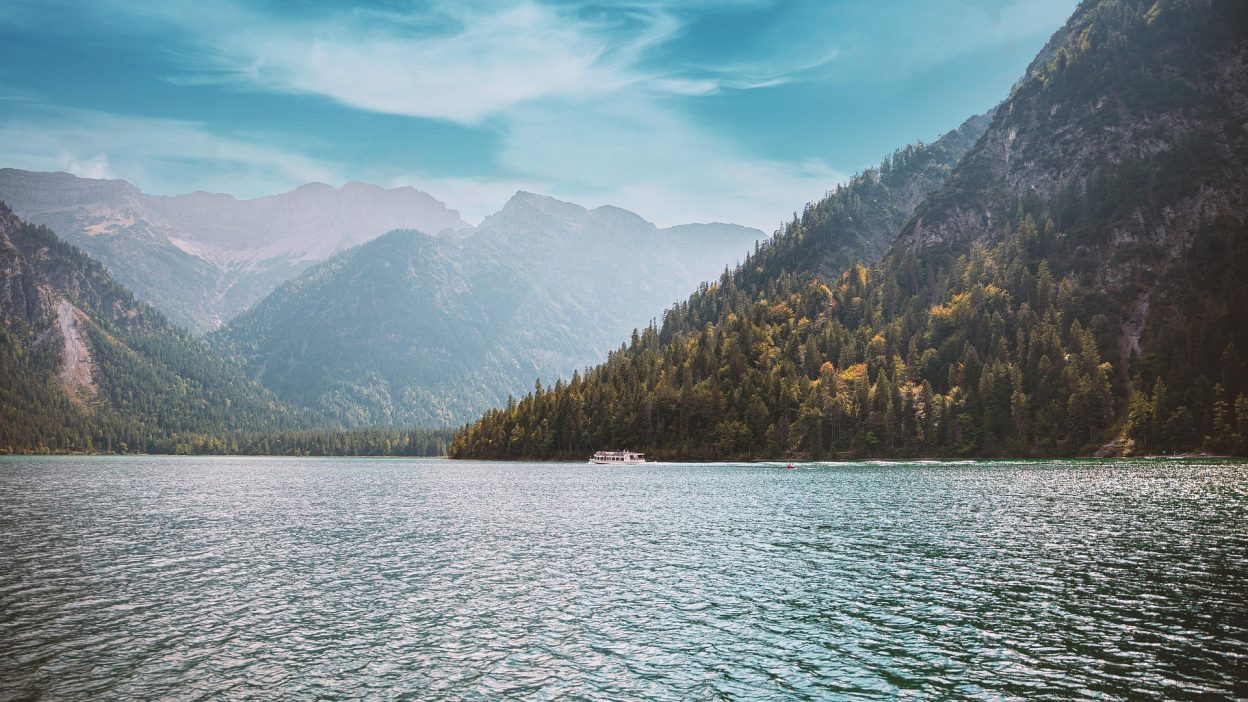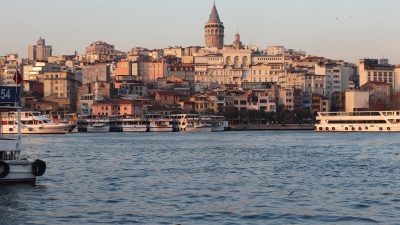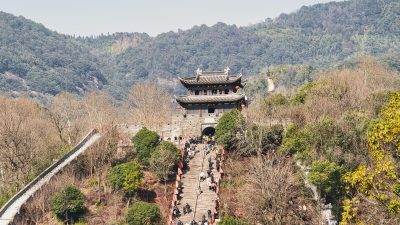The Night Lake Monoun Turned Into a Silent Killer
On the evening of 15 August 1984, the people living near Lake Monoun in Cameroon had no idea that their world was about to change forever. The day had been like any other, with farmers tending to their crops, fishermen casting their nets, and travellers making their way along the roads that passed by the lake. But as night fell, something invisible and deadly rose from the depths of the water.
Without warning, a silent cloud of carbon dioxide (CO₂) emerged from the lake and spread across the land. Within minutes, dozens of people collapsed where they stood, gasping for air but unable to breathe. There was no explosion, no fire, no earthquake—only a deadly mist that moved like a ghost, suffocating everything in its path.
By the time the disaster was over, 37 people lay dead, along with countless animals. Many believed it was the work of witchcraft, government experiments, or even supernatural forces. But when scientists arrived, they uncovered a terrifying truth: the lake had erupted in a way the world barely understood, releasing a toxic wave of suffocating gas.
The real question was—could it happen again?
1. The Day Death Rose from the Water
For generations, Lake Monoun had been a source of life. Nestled in Cameroon’s Oku Volcanic Field, the lake was surrounded by lush forests and small villages where people lived peacefully. The water was used for fishing, irrigation, and drinking, and there was no reason to suspect it held a deadly secret beneath its calm surface.
On that fateful August evening, locals were going about their usual activities when, suddenly, something went terribly wrong. Those near the lake felt an odd sensation in the air—a strange heaviness, a sudden dizziness. Then, without warning, they began to collapse.
Some managed to take a few shaky steps before falling, while others died instantly, mid-stride. Motorcyclists riding along the roads crashed without trying to stop, their lifeless bodies found slumped over their bikes. People inside their homes, near the lake, were found lying motionless, as if they had simply gone to sleep and never woken up. The entire area fell eerily silent, as though life itself had been erased in an instant.
The survivors who arrived later were met with a nightmarish scene. There were no gunshots, no fire, no sign of struggle—only bodies scattered on the ground, their faces frozen in expressions of confusion and fear. It was a massacre without a visible weapon.
2. The Deadly Secret Beneath Lake Monoun
At first, no one could explain what had happened. Some villagers whispered that it was the work of evil spirits. Others suspected a government experiment gone wrong, or a toxic chemical spill. But as experts arrived to investigate, a terrifying explanation emerged—a limnic eruption.
A limnic eruption is an extremely rare natural disaster that occurs when a lake suddenly releases a massive cloud of carbon dioxide (CO₂) gas, displacing oxygen and suffocating every living being in the area. Unlike volcanic eruptions, there is no lava, fire, or earthquake—just an invisible, suffocating mist that spreads silently.
In the case of Lake Monoun, underground volcanic activity had been feeding CO₂ into the deep waters for years. The gas remained trapped beneath the lake due to the immense water pressure. Over time, the lower layers of the lake became super-saturated with gas, forming a deadly high-pressure reservoir beneath the surface.
Then, on that fatal night, something triggered a sudden release. Whether it was a landslide, an earthquake, or a simple shift in temperature, the pressure in the lake suddenly changed. The trapped gas exploded upwards, sending a thick, invisible cloud of CO₂ into the air. Since CO₂ is heavier than oxygen, it spread along the ground like a rolling fog, displacing breathable air and suffocating everyone in its path.
3. The Death Toll: Who Were the Victims?
The official death toll of the Lake Monoun disaster was 37 people, but survivors believe that the actual number may have been higher. Many of the victims were simply passing by the lake when the gas cloud struck, having no idea that the air around them had turned into a silent killer.
All 37 confirmed victims died of asphyxiation—they had no wounds, no injuries, and no signs of external trauma. Many were found frozen in place, as though they had been stopped mid-step. Some collapsed while eating, walking, or riding motorcycles, their bodies lying where they had fallen.
The gas did not just affect humans. Livestock, birds, and even insects were found dead, further proving that the disaster had been a widespread, airborne catastrophe. The fact that so many died instantly suggests that the CO₂ was released in an enormous burst, leaving no time for people to react or escape.
4. How Did This Happen? The Deadly Science Behind Limnic Eruptions
Before Lake Monoun erupted, limnic eruptions were almost completely unknown to scientists. The idea that a lake could suddenly explode with toxic gas was unheard of.
The deadly process happened in several steps. Over decades, carbon dioxide seeped from underground volcanic vents into the deep waters of Lake Monoun, where it became trapped under immense pressure. This process created an unstable layer of gas-rich water at the bottom of the lake, waiting for the right trigger to be released.
Then, on 15 August 1984, something disturbed the delicate balance. It could have been a landslide, a sudden temperature change, or a minor earthquake—whatever it was, it caused the gas to explode to the surface in a violent, silent burst.
As soon as the CO₂ was released, it formed a dense cloud that spread across the land, suffocating anyone in its path. Because CO₂ is heavier than air, it didn’t rise into the sky like smoke from a fire. Instead, it crawled along the ground, pushing oxygen out of the way and making it impossible to breathe.
5. Could This Disaster Have Been Prevented?
With today’s knowledge, it is possible that the Lake Monoun disaster could have been prevented. However, at the time, no one knew that a lake could erupt in this way, making it impossible to predict what was coming.
In hindsight, there were warning signs that something was wrong with the lake. Fishermen had reported strange bubbles rising from the water in the months before the disaster. Some villagers noticed a foul smell, which may have been caused by sulfuric gases mixed with the CO₂. Additionally, animals had been mysteriously dying near the lake, a possible sign that small amounts of gas had already started leaking.
Unfortunately, without proper scientific understanding, these signs were ignored, leading to one of the most mysterious and chilling mass deaths in modern history.
6. The Government’s Response: A Failure to Act?
In the aftermath of the Lake Monoun disaster, the Cameroonian government’s response was sluggish and disorganised. At first, authorities were uncertain about what had happened. There was no explosion, no fire, and no visible destruction—only dozens of dead bodies with no wounds or external injuries.
With no clear explanation, officials struggled to calm public fears. Some locals believed it was a government experiment gone wrong, while others suspected supernatural forces. The lack of clear information only fuelled paranoia.
Even after scientists identified a limnic eruption as the cause, the government failed to act immediately. No preventive measures were put in place, no warnings were issued to communities living near other volcanic lakes, and no attempts were made to degas Lake Monoun to prevent another disaster.
It wasn’t until two years later, when Lake Nyos erupted in 1986, killing over 1,700 people, that the government finally acknowledged the true danger. This second catastrophe forced authorities to take action, but by then, the cost had been too high.
Had officials taken the Monoun disaster seriously, had they researched and acted immediately, the Lake Nyos tragedy could have been avoided. Instead, their failure to act led to one of the deadliest limnic eruptions in history.
7. Could It Happen Again? The Looming Danger of Volcanic Lakes
Even though Lake Monoun has been degassed, many other lakes across the world remain deadly time bombs. The most dangerous of them all is Lake Kivu, located on the border of Rwanda and the Democratic Republic of the Congo.
Lake Kivu is far larger than Lake Monoun and holds an estimated 300 times more CO₂. If a similar eruption were to occur, it could kill millions of people in the surrounding cities of Goma and Bukavu. Scientists warn that if Lake Kivu erupts, it will make both Monoun and Nyos look like minor events in comparison.
Other lakes in Indonesia, the Philippines, and Italy have also shown signs of dangerous gas buildup. Without constant monitoring and degassing efforts, another silent disaster could strike at any time.
The scariest part? Limnic eruptions happen with no warning. There is no earthquake, no storm, no fire—just a silent wave of death rolling across the land. By the time people realise what’s happening, it’s already too late.
8. Lessons from Lake Monoun: What the World Learned
The Lake Monoun disaster changed the way scientists study volcanic lakes. Before 1984, no one had even heard of a limnic eruption—the idea that a lake could explode with toxic gas was unheard of.
After Monoun and Nyos, researchers began studying gas buildup in lakes around the world. They realised that many volcanic lakes contained lethal amounts of CO₂, trapped under high pressure and waiting for the right trigger to be released.
One of the most important lessons was that these disasters could be prevented. Scientists developed degassing pipes, which allow CO₂ to be released gradually and safely. Thanks to this technology, lakes like Monoun, Nyos, and Kivu are now being monitored and managed to reduce the risk of future eruptions.
But the biggest lesson? Nature doesn’t warn before it strikes. What happened at Monoun was a wake-up call—a reminder that deadly forces can exist in the most unexpected places, waiting for the right moment to unleash chaos.
9. The Silent Killer: A Nightmare That Will Never Be Forgotten
Even today, survivors of the Lake Monoun disaster remember the horror. Families lost loved ones without knowing why. People went to sleep thinking it was just another normal night, only to wake up and find entire villages wiped out.
The most chilling part of the story is how quickly and silently death came. There was no struggle, no alarm, no escape. Victims collapsed where they stood, never knowing what hit them.
For years, locals believed in curses and spirits, but science revealed a much more terrifying truth—the lake itself had turned into a killer.
The tragedy of Monoun serves as a reminder that nature can be as cruel as it is beautiful. What looks peaceful and calm on the surface can sometimes be hiding an unstoppable force beneath.
10. Could Another Deadly Lake Eruption Be Coming?
Scientists may have learned from Monoun, but there is no guarantee that a similar disaster won’t happen again. Many dangerous volcanic lakes are still active, and in some regions, governments lack the resources to monitor them properly.
Even though lakes like Monoun and Nyos have been degassed, new volcanic activity could refill them with CO₂ over time. If that happens, they could erupt again, repeating the same nightmare all over again.
The question is not if another lake eruption will happen—it’s when. And when it does, will the world be ready this time?
FAQs
1. What caused the Lake Monoun disaster?
The disaster was caused by a limnic eruption, a rare event where a lake suddenly releases a massive cloud of carbon dioxide (CO₂), suffocating all living things in the area.
2. How many people died in the Lake Monoun disaster?
A total of 37 people died, all from asphyxiation due to the lack of oxygen. Many were found frozen mid-step, unable to escape.
3. Could Lake Monoun erupt again?
Scientists have since installed degassing pipes to prevent future eruptions. However, volcanic lakes can refill with CO₂ over time, meaning constant monitoring is required.
4. What’s the most dangerous lake today?
Lake Kivu, located in Central Africa, is considered the most dangerous volcanic lake. If it erupts, it could kill millions of people in Rwanda and the Democratic Republic of the Congo.
5. How can limnic eruptions be prevented?
Limnic eruptions can be prevented by degassing the lakes, using pipes that release CO₂ slowly and safely before it can build up to dangerous levels.




